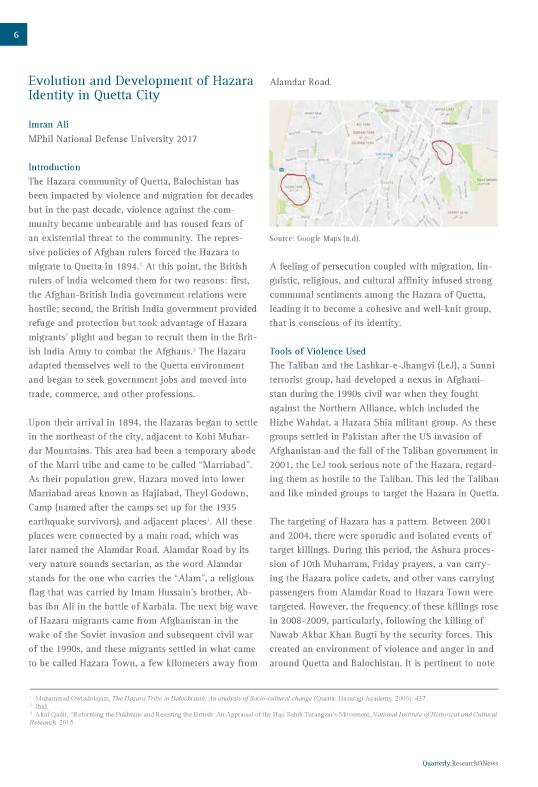
Evolution and Development of Hazara Identity in Quetta City
INTRODUCTION
The Hazara community of Quetta, Balochistan has been impacted by violence and migration for decades but in the past decade, violence against the community became unbearable and has roused fears of an existential threat to the community. The repressive policies of Afghan rulers forced the Hazara to migrate to Quetta in 1894.1 At this point, the British rulers of India welcomed them for two reasons: first, the Afghan-British India government relations were hostile; second, the British India government provided refuge and protection but took advantage of Hazara migrants’ plight and began to recruit them in the British India Army to combat the Afghans.2 The Hazara adapted themselves well to the Quetta environment and began to seek government jobs and moved into trade, commerce, and other professions.
Upon their arrival in 1894, the Hazaras began to settle in the northeast of the city, adjacent to Kohi Muhar- dar Mountains. This area had been a temporary abode of the Marri tribe and came to be called “Marriabad”. As their population grew, Hazara moved into lower Marriabad areas known as Hajiabad, Theyl Godown, Camp (named after the camps set up for the 1935 earthquake survivors), and adjacent places3. All these places were connected by a main road, which was later named the Alamdar Road. Alamdar Road by its very nature sounds sectarian, as the word Alamdar stands for the one who carries the “Alam”, a religious flag that was carried by Imam Hussain’s brother, Abbas ibn Ali in the battle of Karbala. The next big wave of Hazara migrants came from Afghanistan in the wake of the Soviet invasion and subsequent civil war of the 1990s, and these migrants settled in what came to be called Hazara Town, a few kilometers away from A feeling of persecution coupled with migration, linguistic, religious, and cultural affinity infused strong communal sentiments among the Hazara of Quetta, leading it to become a cohesive and well-knit group, that is conscious of its identity.
Citations

